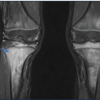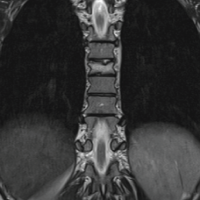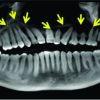[box type=”bio”] Learning Point for the Article: [/box]
CRMO is essentially a diagnosis of exclusion, and hence, it is paramount importance to rule out all other fatal causes before making diagnosis of CRMO.
Case Report | Volume 8 | Issue 3 | JOCR May – June 2018 | Page 3-6| T K Jeejesh Kumar, Jasim Salim, T Jaseem Shamsudeen. DOI: 10.13107/jocr.2250-0685.1082
Authors: T K Jeejesh Kumar[1], Jasim Salim[2], T Jaseem Shamsudeen[1]
[1] Department of Orthopaedics, Government Medical College, Kozhikode, Kerala, India.
[2] Department of Orthopaedics, Baby Memorial Hospital, Kozhikode, Kerala, India.
Address of Correspondence:
Dr. T K Jeejesh Kumar,
Jisha Nivas, Puthuppanam, Vatakara, Kozhikode – 673 105, Kerala, India.
E-mail: drjeejesh@gmail.com
Abstract
Introduction: Chronic recurrent multifocal osteomyelitis (CRMO) is an idiopathic inflammatory disorder of bone seen primarily in children and adolescents. It is part of the clinical picture of non-bacterial osteomyelitis and typically presents a relapsing course with both remissions and spontaneous exacerbations. CRMO is typically seen in the metaphysis of long bones. Usually, the clinical symptoms include painful swellings of the affected regions. It is being reported with increasing frequency but many cases of this disease go unreported. No infective agent has been identified and antibiotics do not affect the course of the disease.
Case Report: A 12-year-old girl presented with complaints of pain and swelling over both clavicles for 6 months duration. It was of insidious onset and it started bilaterally on the same day. It was not associated with fever. There was no history of trauma or any other swellings. On clinical examination, both clavicles were enlarged on medial half, non-tender on palpation and there was no local rise of temperature. The swellings were hard in consistency with smooth surface and margins were ill-defined. On examination, both shoulders range of motion were normal. There was no distal neurovascular deficits. Systemic examination was unremarkable. Blood investigations revealed erythrocyte sedimentation rate – 90, C-reactive protein – 0.6, total count – 8000. Rheumatoid arthritis factor, anti-cyclic citrullinated peptide, and anti-streptolysin O titer were negative. Hemoglobin electrophoresis was normal. Peripheral smear was normal. Sickling test was negative. Mantoux test and sputum acid-fast bacillus were also negative. Liver function tests and renal function tests, were within normal limits. No abnormalities were noted in ultrasonography abdomen. MRI of bilateral clavicle showed expansile lesions in bilateral clavicles -(medial aspect) possibility of CRMO. Histopathological examination showed mainly ossifying bone with foci of hemorrhage. Culture from the lesion showed no growth.
Conclusion: CRMO is a rare benign condition. A detailed history, thorough clinical examination and rationale investigations are required. Furthermore, multidisciplinary approach including pathologist, radiologist, and pediatrician is a must. Although CRMO is rare mainly because most of the cases go undiagnosed, prognosis is good without permanent skeletal abnormalities. CRMO is essentially a diagnosis of exclusion, and hence, it is paramount importance to rule out all other fatal causes before making diagnosis of CRMO.
Keywords: Chronic recurrent multifocal osteomyelitis, Bilateral clavicle, Diagnosis of exclusion.
Introduction
Chronic recurrent multifocal osteomyelitis (CRMO) is an idiopathic inflammatory disorder of bone seen primarily in children and adolescents. Synonyms are subacute symmetric osteomyelitis, chronic symmetric osteomyelitis, chronic multifocal symmetric osteomyelitis, chronic multifocal cleidometaphyseal osteomyelitis, and tumorous osteomyelitis [1]. CRMO was first described by Giedion et al. in 1972 [2]. Since its first description in 1972, a total of about 100 cases can be found in literature. CRMO is part of the clinical picture of non-bacterial osteomyelitis and typically presents a relapsing course with both remissions and spontaneous exacerbations. It is typically seen in the limbs and the metaphysis of long bones in particular. Usually, the clinical symptoms include painful swellings of the affected regions. It is being reported with increasing frequency but many cases of this disease still go unreported. No infective agent has been identified and antibiotics do not affect the course of the disease. Here, we report a rare case of CRMO that presented with swelling of both clavicles.
Case Report
A 12-year-old girl presented with complaints of pain and swelling over both clavicles for 6 months duration. It was of insidious onset and it started bilaterally on the same day. She was seen by different doctors and was treated with analgesics. Pain and swelling used to subside after medication but it recurred few days after stopping drugs. It was not associated with fever. There was no history of trauma or any other swellings. There was no history of any polyarthralgia or morning stiffness. She didn’t complaint of loss of appetite or weight loss. There was no history suggestive of throat infections or skin lesions. In spite of these, her daily activity of living was not affected. There was no similar history in the family. On clinical examination, both clavicles were enlarged on medial half (Fig. 1).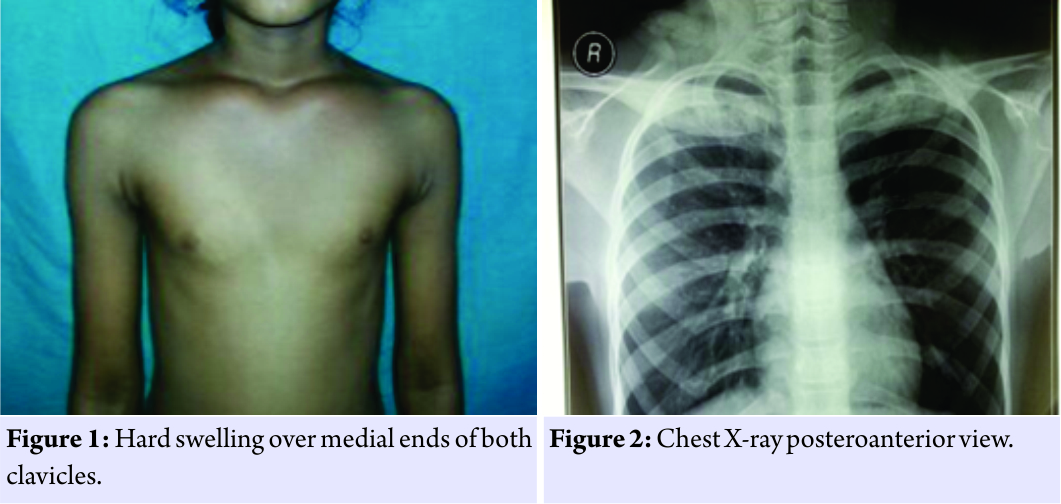 Clavicles were non-tender on palpation and there was no local rise of temperature. There was no tenderness in both sternoclavicular joints and acromioclavicular joints. The swellings were hard in consistency with smooth surface and ill-defined margins. On examination, both shoulders range of motion (ROM) were normal. There was no distal neurovascular deficits. Systemic examination was unremarkable. X-ray showed expansile sclerotic lesion on the medial half of clavicles bilaterally. Blood investigations were done which showed raised erythrocyte sedimentation rate (ESR-90), C-reactive protein – 0.6, total count – 8000. Antistreptolysin O titer (ASO) was negative. Peripheral smear was normal. Hemoglobin electrophoresis was normal. Sickling test was negative. Rheumatoid arthritis (RA) factor and anti-cyclic citrullinated peptide were negative. Mantoux test and sputum acid-fast bacillus (AFB) were also negative. Liver function test and renal parameters were within normal limits. Chest X-ray was otherwise within normal limits (Fig. 2). No abnormalities were noted in ultrasonography (USG) abdomen. Magnetic resonance imaging (MRI) showed expansile lesions in bilateral (medial aspect) clavicles – possibility of CRMO (Fig. 3). We proceeded with biopsy. Specimen was sent for histopathologic examination and culture. Culture showed no growth. Histopathological examination showed mainly ossifying bone with foci of hemorrhage.
Clavicles were non-tender on palpation and there was no local rise of temperature. There was no tenderness in both sternoclavicular joints and acromioclavicular joints. The swellings were hard in consistency with smooth surface and ill-defined margins. On examination, both shoulders range of motion (ROM) were normal. There was no distal neurovascular deficits. Systemic examination was unremarkable. X-ray showed expansile sclerotic lesion on the medial half of clavicles bilaterally. Blood investigations were done which showed raised erythrocyte sedimentation rate (ESR-90), C-reactive protein – 0.6, total count – 8000. Antistreptolysin O titer (ASO) was negative. Peripheral smear was normal. Hemoglobin electrophoresis was normal. Sickling test was negative. Rheumatoid arthritis (RA) factor and anti-cyclic citrullinated peptide were negative. Mantoux test and sputum acid-fast bacillus (AFB) were also negative. Liver function test and renal parameters were within normal limits. Chest X-ray was otherwise within normal limits (Fig. 2). No abnormalities were noted in ultrasonography (USG) abdomen. Magnetic resonance imaging (MRI) showed expansile lesions in bilateral (medial aspect) clavicles – possibility of CRMO (Fig. 3). We proceeded with biopsy. Specimen was sent for histopathologic examination and culture. Culture showed no growth. Histopathological examination showed mainly ossifying bone with foci of hemorrhage.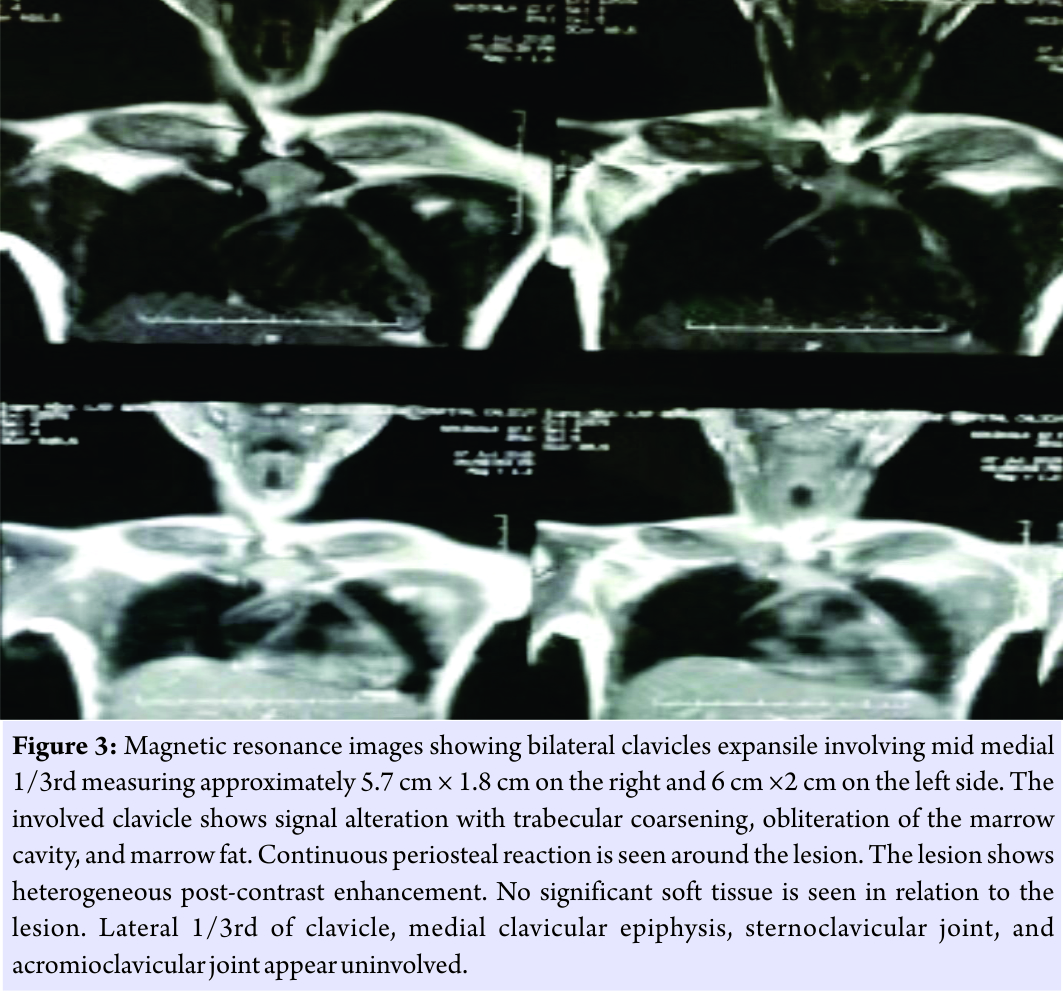
Discussion
CRMO is a disease typically found in patients between the ages of 4 and 27 years, with a mean age of onset of 14 years. It is found more in girls, as in chronic unifocal osteomyelitis [3]. It most commonly affects the proximal and distal tibia. Other sites of involvement include femur, clavicle, spine, and mandible. Radiographically, lesions are often symmetrical and juxtaepiphyseal in the long bones. The appearances are those typical of osteomyelitis with metaphyseal lucency. Bone scanning will demonstrate increased uptake at the involved sites and helps in detecting asymptomatic areas of involvement. The patients with CRMO may experience symptoms for up to 10 years, with the average being 2 years [4], although Björkstén et al. have reported a case of a patient whose symptoms persisted for 15 years [5]. There may be localized swelling over affected sites, antalgic gait, pain, and discomfort. The patients are generally afebrile. Their ESR may be elevated, but they usually have normal white cell counts and their serum biochemistry and hematology are usually normal. The arthritis in this condition is not typical of juvenile RA; morning stiffness is not a feature and there is no radiological evidence of joint abnormality [4]. This pattern of multiple granulomatous involvement of bone without the classical destructive changes of acute infective osteomyelitis also occurs in chronic granulomatous disease of childhood (CGDC). The radiographic appearances of multifocal sites of osteomyelitis are similar [6]. However, there are significant differences between CRMO and CGDC. The latter is a hereditary process, is usually a protracted febrile illness, involves multiple organs and is often fatal and is caused by a neutrophil enzyme deficiency (usually NADPH oxidase), which can be diagnosed by the nitro blue tetrazolium reductase test. This enzyme deficiency leads to diminished bactericidal activity. CGDC rarely involves the long bones and axial skeleton; cultures usually identify the causative organism and the patients respond well to long-term antibiotics [6]. The cause of CRMO remains elusive. Initial reports suggested an infectious origin with suspected organisms including Staphylococcus aureus, Mycoplasma hominis, Propionibacterium acnes, and Chlamydia. However, larger studies have shown no common infectious agent responsible for CRMO. The association of CRMO with dermatologic disorders (such as psoriasis) and inflammatory bowel disease and its response to steroids has led to the suggestion of an autoimmune cause [7]. More recently, a genetic origin for CRMO has been suggested secondary to observation of disease in siblings and monozygotic twins. By means of a family-based association study, a susceptibility locus has been identified at 18q21.3–22. The association of some of these forms of sclerosing osteomyelitis with pustulosis palmoplantaris (PPP) has led to the label “pustulotic arthro-osteitis” (PAO) [8]. Similar radiological and pathological changes are seen in sternocostoclavicular hyperostosis (SCCH), a disease characterized by hyperostotic and sclerotic changes affecting the manubrium sterni and sternal end of clavicle [9]. Hyperostosis of the upper anterior ribs with ossification of the intervening soft tissues is a feature. This condition usually affects older patients, is symmetrical and is more common in males. SCCH is also associated with PPP. It has been postulated by Jurik et al. that the diseases of CRMO, PAO, or SCCH are manifestations of a single disease with different courses depending on age [8, 10] with CRMO being present in children and young adults, and PAO or SCCH occurring in older patients. This hypothesis is supported by the fact that the radiological changes, clinical course, and histopathological findings are nearly identical for all three conditions and all three conditions are frequently associated with PPP. The treatment of a patient with chronic multifocal osteomyelitis should consist of general supportive measures. Antibiotics do not alter the course. Steroids and non-steroidal anti-inflammatory drugs have shown varying efficacy [10, 11]. The clinical course is one of the slow continued improvements and the prognosis is good, with no reports of ensuing permanent skeletal abnormalities. Premature physeal fusion, shortening, and angular deformities can develop as late manifestations. The patients typically present with non-specific complaints such as pain, tenderness, swelling, or limited ROM at one or more sites. Systemic manifestations such as fever, weight loss, and lethargy may be present but are unusual. Laboratory findings at initial presentation are essentially non-specific, with the most common findings being mildly elevated ESR and C-reactive protein level with a normal white blood cell count. Because the imaging findings of CRMO can be non-specific, especially early in the course of the disease or in the presence of a solitary lesion, microbiologic and histopathologic analysis are essential to exclude infectious osteomyelitis and neoplastic lesions. At histologic evaluation, CRMO bone lesions show non-specific inflammatory changes with granulocytic infiltration. In the acute stages, there is a predominance of polymorphonuclear leukocytes and osteoclastic bone resorption with or without multinucleated giant cells. As the disease progresses, the predominant features are lymphocytes, plasma cells, and histiocytes with occasional granulomas and increased osteoblast activity. The imaging evaluation of CRMO should start with radiographic evaluation of the symptomatic sites. If the radiographs are negative in the presence of significant clinical symptoms, further evaluation with MRI should be considered to evaluate for marrow edema. When a diagnosis of CRMO is considered on the basis of clinical findings and initial imaging evaluation, further evaluation of the whole body is suggested to identify multifocal lesions that may be clinically asymptomatic. Whole-body evaluation has traditionally been performed with 99mTc bone scintigraphy, although whole-body MRI is being increasingly used for the evaluation of multifocal bone lesions.
Differential diagnosis
Multifocal bacterial OM
Multifocal trauma
Pauciarticular RA
Multifocal primary neoplasm (Ewings, osteosarcoma)
Histiocytosis
Leukemia, lymphomas
Metastatic secondaries (sarcoma, neuroblastoma).
Iyer et al. [12] have formulated systematic approach to assist in making the diagnosis of CRMO by exclusion using the following criteria:
1. Lack of causative organism
2. No abscess, fistula or sequestra formation
3. Radiographic appearance of subacute or chronic osteomyelitis
4. Atypical location compared to infectious osteomyelitis
5. Non-specific histopathologic and laboratory findings compatible with subacute or chronic osteomyelitis or other known disease process
6. Prolonged (>6 months) and recurrent painful symptoms
7. Accompanying PPP or acne.
In case of our patient, the differential diagnoses we considered were fibrous dysplasia, infective osteomyelitis (salmonella, tuberculosis), malignancies (primary/secondary), juvenile idiopathic arthritis, and CRMO (diagnosis of exclusion). Negative ASO titer helped to rule out streptococcal infection. Peripheral smear was done to rule out hematological malignancy and sickle cell. Hemoglobin electrophoresis and sickling test were also negative. Tuberculosis was ruled out with Mantoux test and sputum AFB. Lymphoma and abdominal primaries were ruled out with an USG abdomen. Histopathological examination showed no features of typical osteomyelitis. MRI findings were suggestive of CRMO and we reached the diagnosis of CRMO after excluding other conditions. She underwent conservative management with analgesics and supportive care and is asymptomatic at the latest follow up of 4 years
Conclusion
CRMO is a rare benign condition. A detailed history, thorough clinical examination and rationale investigations are required as this is a diagnosis of exclusion. Furthermore, multidisciplinary approach including pathologist, radiologist, and pediatrician is a must.
Clinical Message
Although CRMO is rare mainly because most of the cases go undiagnosed, prognosis is good without permanent skeletal abnormalities. CRMO is essentially a diagnosis of exclusion, and hence, it is paramount importance to rule out all other fatal causes before making diagnosis of CRMO.
References
1. Resnick D, Niwayana G. Diagnosis of Bone and Joint Disorders. 3rd ed. Philadelphia, USA: WB Saunders Publications, 1993. p. 2596-9.
2. Giedion A, Holthusen W, Masel LF, Vischer D. Subacute and chronic “symmetrical” osteomyelitis. Ann Radiol (Paris) 1972;15:329-42.
3. Cole WG. The management of chronic osteomyelitis. Clin Orthop Relat Res 1991 Mar;(264):84-9.
4. Carr AJ, Cole WG, Roberton DM, Chow CW. Chronic multifocal osteo-myelitis. J Bone Joint Surg (British) 1993;4:7582-91.
5. Björkstén B, Gustavson KH, Eriksson B, Lindholm A, Nordström S. Chronic recurrent multifocal osteomyelitis and pustulosis palmoplantaris. J Pediatr 1978;93:227-31.
6. Murray SD, Kehl DK. Chronic recurrent multifocal osteomyelitis: A case report. J Bone Joint Surg (American) 1984;7:1110-1.
7. Ferguson B, Gryfe D, Hsu W. Chronic recurrent multifocal osteomyelitis in a 13 year old female athlete: A case report. J Can Chiropr Assoc 2013;57:334-40.
8. Jurik AG, Moller SH, Mosekilde L. Chronic sclerosing osteomyelitis of the iliac bone. Etiological possibilities. Skeletal Radio 1988;17:114-8.
9. Tan BS, Nayanar V, Mansberg R, Murray IP, Rossleigh MA. Two cases of chronic recurrent multifocal osteomyelitis: Radiological and scintigraphic findings. Australas Radiol 1996;40:437-41.
10. Gamble JG, Rinsky LA. Chronic multifocal osteomyelitis: A distinct clinical entity. J Paediatr Orthop 1986;6:579-84.
11. Cyrlak D, Pais MJ. Chronic recurrent multifocal osteomyelitis. Skeletal Radiol 1986;15:32-9.
12. Iyer R, Thapa M, Chew F. Chronic recurrent multifocal osteomyelitis: Review. Am J Roentgenol 2011;196:87-91.
 |
 |
 |
| Dr. T K Jeejesh Kumar | Dr. Jasim Salim | Dr. T Jaseem Shamsudeen |
| How to Cite This Article: Kumar T K J, Salim J, Shamsudeen T J. Chronic Recurrent Multifocal Osteomyelitis – A Rare Clinical Presentation and Review of Literature. Journal of Orthopaedic Case Reports 2018. May- June; 8(3): 3-6. |
[Full Text HTML] [Full Text PDF] [XML]
[rate_this_page]
Dear Reader, We are very excited about New Features in JOCR. Please do let us know what you think by Clicking on the Sliding “Feedback Form” button on the <<< left of the page or sending a mail to us at editor.jocr@gmail.com

